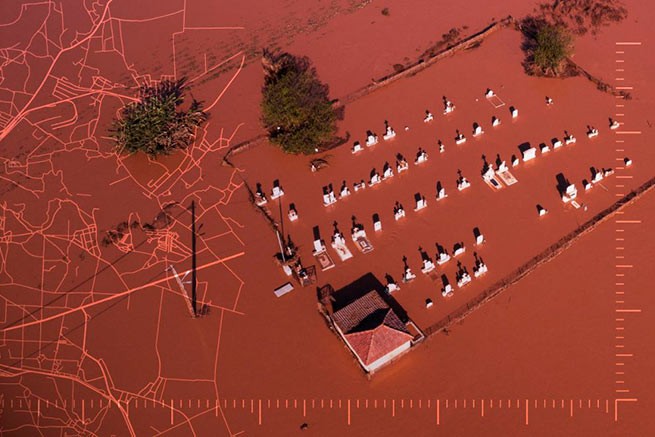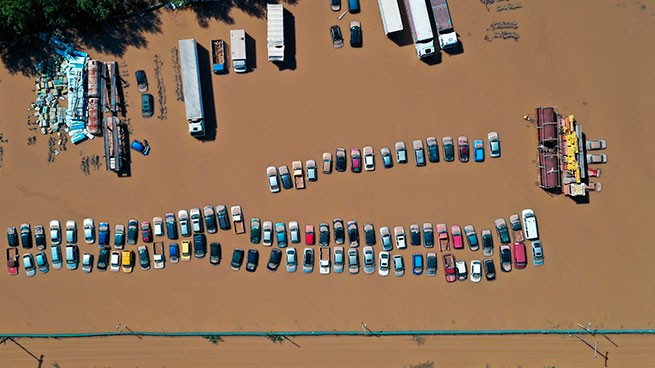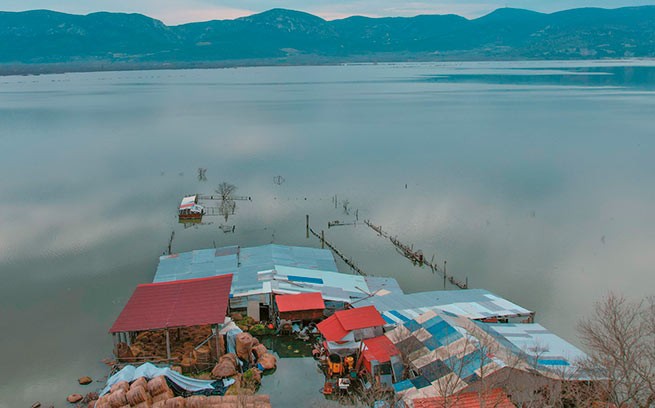Flood protection and water management in the affected areas of Campos, abandonment of cotton cultivation, expansion of Lake Karla by 17,000 hectares, construction of three large and 250 small dams are some of the measures proposed by the Dutch of Thessaly.
Using Margaret Thatcher’s historical phrase (when she introduced austerity measures to save the British economy) “Yes, the medicine is bitter and difficult, but the patient needs it to live,” The scientific team of the Dutch HVA is trying to explain the need to take urgent measures to save Thessaly.
Since the problems that arose after the passage of Cyclone Daniel in the fall of 2023 are still not resolved, the Dutch propose a number of tough measuressuch as controlled flooding, relocation of villages and fields that are no longer used as flood control zones, construction of dams, opening of tributaries and changes in agricultural production so that the Campos region can not only survive, but prosper.
For Larisa
For Larissa, scientists propose the immediate demolition of buildings built on the Pinios River, which limit the river bed’s carrying capacity by 50%, and the creation of flood control zones, possibly including the seizure of agricultural land. For the city of Larissa and surrounding areas, HVA says “special attention” is needed and suggests: “The release of flood water into the Karla Lake basin must be prevented by strengthening the embankments and constructing a spillway at the Girtoni Dam, as well as creating a retention capacity for the downstream areas.”
https://www.youtube.com/watch?v=rG0qyHc6x2M
Flooding caused by precipitation after the passage of Cyclone Daniel in September 2023.
Dutch scientists note that The flood zone along the city of Larisa is a serious problem, “since various buildings for industrial and commercial purposes have been built there, which has reduced the carrying capacity of the Pinios River to 50% of its capacity. Therefore, the removal of all these obstructive structures – buildings and carrying out maintenance and cleaning work in the flood zone is considered an urgent task. It is considered an urgent task. It is clear that it is necessary to introduce a strict ban on any new construction within the floodplain and special attention should be paid to the issuance of permits for the construction of structures in the floodplain.”
For Lake Karla
Regarding Lake Karla, it is stated that its capacity is “is insufficient to store excess water from future extreme weather events. Therefore, the storage capacity needs to be increased to accommodate such volumes. The existing tunnel that can drain water into Pagasite Bay was not designed for this level. Therefore, it is necessary to either expand the lake, or create water retention capacity on existing land in the valley. Increasing tunnel capacity is not recommended, at least as a stand-alone measure. It would be more appropriate to take some of the agricultural land out of production and turn it into natural areas.
Since experts note that the infrastructure being created should “consist mainly of river embankments, as well as secondary internal embankments, which will serve as protection in the event of a breach of river embankments or very intense internal flooding”, the network of dams they propose is also of great importance.
In this case we are talking about control dams, that is, 100-250, which should be built in small valleys, gorges and streams in combination with natural solutions. With their help “The high flow of water from mountainous areas will be reduced. The dissipation of stormwater energy will significantly reduce soil erosion. The operation of existing and future large dams must be adjusted and adjusted.”
Three large dams
Regarding the proposed small and medium-sized dams to contain the flow of water in mountainous areas and small natural valleys, which will serve as moderators for the water flowing into the Campo, the Dutch agree with the proposal of the district scientists to build three large dams at Muzaki, Geita and Skopia. They also argue that the Sykia Dam, part of the Acheloos diversion project, must be completed to channel 200 million cubic meters of water from the river into eastern Thessaly to enrich groundwater.
It is also proposed to create several controlled flood zones to retain water while it is generated, so that the amount of water entering the Charles area (for which a 17,000 hectare expansion is proposed) will be much less. The study says it would also be beneficial to build spillways that would allow water to flow over the top and beyond the dams, as opposed to solutions currently used such as the gateway at Girtoni Dam (where the catchment is proposed to be completed).
The study also proposes opening a tunnel to the Aegean Sea, which would be used to drain water that accumulates in Lake Karla in case of heavy rainfall.

Flooding caused by rainfall after the passage of Cyclone Daniel in September 2023.
“No more cotton”
Dutch scientists call the obvious and inevitable risk of desertification of the region “a matter of survival” for the agricultural sector of Thessaly. According to their estimates, the annual water shortage of about 500 million cubic meters that Thessaly faces will increase in the coming years as a result of climate change, which is expected to lead to higher temperatures and reduced rainfall.
Experts note that there are already many cases of seawater intrusion into underground aquifers, indicating the risk of water contamination (making it unsuitable for irrigation) due to the widespread use of groundwater by farmers in Thessaly through tens of thousands of wells, with or without permission. which led to the depletion of groundwater levels.
To cope with “a truly enormous risk of causing serious and irreversible damage, as has happened in the past in many other countries that have over-pumped water for irrigation,” a group of HVA scientists proposes limit water use, find ways to increase its quantity and reorganize the agricultural sector to produce higher value products.
Flooding caused by rainfall after the passage of Cyclone Daniel in September 2023.
As a solution to ensure farmers’ incomes while maintaining groundwater levels in the region, they propose a gradual, multi-year, and coordinated transition from low-value, water-intensive crops (e.g. cotton and corn) to horticultural and fruit crops that require (in most cases) less water and space, but have higher value and provide farmers with more income. It is also proposed to reconfigure current feed production, either by shifting it to crops that require less water, or by purchasing feed produced in other parts of Greece and using the land to produce higher value products.
The Dutch offer stop growing highly hydrophilic crops such as cotton, and replace them with sesame (which requires less water, the same tools as cotton, is in demand, but is more labor intensive to grow), which previous generations of farmers in Campos had experience cultivating. Proposals for crop rotation included in the study include fruits and vegetables such as tomatoes, which require less space and provide higher income.

Flooding caused by rainfall after the passage of Cyclone Daniel in September 2023.
How much is it
As the Dutch propose, among other things, the establishment of a Watershed Management Authority with executive powers and an early warning system, questions arise about the cost of the work needed to restore Thessalian Kampos. There is a real risk of further flooding before the first measures are completed. However, the cost of direct flood control projects alone, such as widening rivers and streams and creating permanent embankments, is estimated to exceed half a billion euros.
More than 200 million euros will be spent on the construction of a relatively small tunnel to divert the waters of the Karla River into the Aegean Sea. And this is only the beginning if the country decides that the center of Greece will not be a desert, but a region that will promote food autonomy and serve as an example for the whole of Europe…
PS This project has one problem. The same one that arose after a project of similar importance, proposed 5 years ago by German scientists, concerning measures to prevent fires in the forests of Greece. The project proposed radical measures that, if implemented, could prevent a series of large forest fires in 2020-2023. However, the project was shelved, and over the years Greece lost about 15% of its forests, which brought the country to a critical level, followed by desertification of the entire region.
And the problem is called the reluctance of officials to do the work assigned to them. Why make the effort if it’s already good?







More Stories
Office rental… hourly
Investors are buying up rural real estate en masse
IRIS: large fine for freelancers who did not activate it before June 30